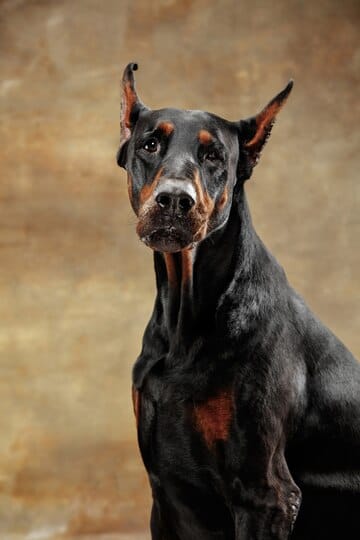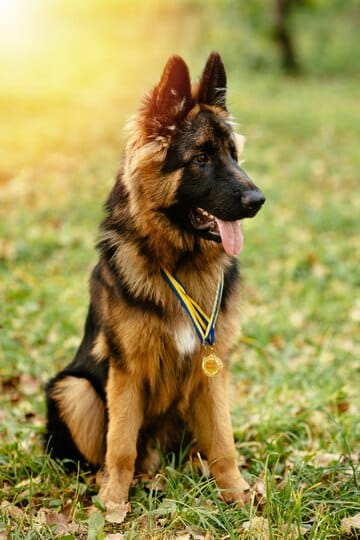- Introduction: Stepping into a Dog’s Shoes (or Paws!)
- The Canine Eye: A Masterpiece of Evolution
- Seeing the World in Color: The Canine Color Spectrum
- Navigating the World: Canine Spatial Awareness and Depth Perception
- Seeing Humans Through a Dog’s Eyes
- Unlocking the Potential: Implications for Dog-Human Interactions
- Conclusion: Celebrating the Wonders of Canine Vision
Introduction: Stepping into a Dog’s Shoes (or Paws!)
Have you ever wondered what the world looks like through the eyes of your furry friend? 🤔 Exploring the fascinating realm of canine vision is like stepping into a whole new realm of perception and experience. From their remarkable low-light adaptations to their unique color vision, dogs see the world in a captivating way that’s quite different from our own.
In this exciting adventure, we’ll dive deep into the science behind how dogs see, uncovering the anatomical and physiological wonders that shape their visual experience. Prepare to be amazed as we unravel the mysteries of canine vision and discover how our four-legged companions perceive the world around them, including the humans they love. 👨🐕

The Canine Eye: A Masterpiece of Evolution
Let’s start by taking a closer look at the amazing structure of the canine eye. While there are many similarities with the human eye, dogs have some unique adaptations that give them a distinct visual edge.
Anatomy of the Canine Eye
| Feature | Canine Eye | Human Eye |
|---|---|---|
| Cornea | Curved and optimized for light gathering | Similar in shape and function |
| Iris | Contracts and expands to control light entry | Also controls light entry |
| Pupil | Adjusts in size to adapt to different light conditions | Serves a similar purpose |
| Lens | Flexible to focus light onto the retina | Also focuses light onto the retina |
| Retina | Contains more light-sensitive rods than cones | Has a higher concentration of cones |
| Tapetum Lucidum | Reflective layer that enhances low-light vision | Absent in human eyes |
The most notable difference is the presence of the tapetum lucidum, a mirror-like structure behind the retina that reflects light back through the photoreceptors. This adaptation allows dogs to see better in low-light conditions, giving their eyes that characteristic “glow” in the dark. 🌙
Photoreceptors: Rods and Cones
Dogs, like humans, have two types of light-sensitive cells in their retinas: rods and cones. Rods are responsible for detecting movement and low-light vision, while cones handle color and fine detail perception.
Fun Fact: Dogs have a higher concentration of rods compared to humans, which is why they excel at seeing in the dark and detecting motion. 🐕💨
Seeing the World in Color: The Canine Color Spectrum
One of the most fascinating aspects of canine vision is their ability to perceive color. While dogs don’t see the world in the same vibrant spectrum as humans, they do possess the capacity for color vision, albeit in a more limited capacity.
The Canine Color Vision Spectrum
| Canine Color Vision | Human Color Vision |
|---|---|
| Dogs are dichromats, meaning they have two color-sensitive cones | Humans are trichromats, with three color-sensitive cones |
| Canine color vision is shifted towards the blue-yellow range | Human color vision covers a wider range, including reds and greens |
| Dogs perceive colors as shades of blue, yellow, and gray | Humans can see a much broader, more vivid range of colors |
This difference in color perception has some interesting implications for how dogs interact with their environment. For example, they may struggle to differentiate between certain colors, like red and green, which are important for human-created things like traffic signals.
Fun Fact: Dogs can see ultraviolet light, which is invisible to humans. This helps them detect urine markings and other important scent cues in their environment. 🌈🐶
Navigating the World: Canine Spatial Awareness and Depth Perception
Beyond color vision, dogs possess remarkable abilities when it comes to perceiving and navigating their surroundings. Their unique visual adaptations, combined with their keen senses of smell and hearing, allow them to experience the world in a profoundly different way than humans.
Spatial Awareness and Depth Perception
| Canine Spatial Awareness | Human Spatial Awareness |
|---|---|
| Dogs have binocular vision, with their eyes positioned on the sides of their heads | Humans have forward-facing eyes, giving us better depth perception |
| Canine vision is optimized for detecting motion and identifying potential threats or prey | Human vision is more focused on precise depth and distance perception |
| Dogs may struggle to accurately judge the distance and size of objects | Humans excel at judging depth and distance, thanks to our stereoscopic vision |
These differences in spatial awareness and depth perception can have significant implications for how dogs interact with their environment and their human companions. For example, dogs may be more attuned to movement and changes in their surroundings, making them particularly adept at tasks like herding or guarding.
Fun Fact: Dogs can see a wider field of view than humans, with a visual range of about 240-280 degrees, compared to our 180-degree field of vision. 🌍👀
Seeing Humans Through a Dog’s Eyes
Now that we’ve explored the fundamentals of canine vision, let’s dive into the fascinating question of how dogs perceive the humans they share their lives with.
The Importance of Human Faces
To dogs, the human face is a treasure trove of information, conveying emotions, intentions, and social cues that are crucial for their understanding and interaction. Dogs have been shown to be highly skilled at reading and responding to human facial expressions.
Fun Fact: Dogs have specialized brain regions that are activated when they see human faces, suggesting they process this visual information in a unique way. 🧠👨🐕
Detecting Human Emotions
Dogs can also detect and respond to human emotional states, differentiating between positive and negative facial expressions. This sensitivity to human emotions may be a result of the close evolutionary and social relationship between dogs and humans.
Fun Fact: Studies have shown that dogs exhibit empathetic responses, such as comforting their owners when they are distressed. 🐶💕
Perceived Size and Dominance
Due to their unique visual system, dogs may see their human companions as larger or smaller than they actually are, which can influence their perception of size and dominance. Taller, larger humans may be viewed as more dominant, while smaller or crouching humans may be seen as less threatening.
Fun Fact: Dogs have been observed to approach and interact with humans differently based on their perceived size and dominance cues. 🐕👨🦱
Unlocking the Potential: Implications for Dog-Human Interactions
The insights we’ve gained into canine vision have important implications for how we interact with and care for our four-legged friends.
Optimizing the Home Environment
By understanding the differences in color perception and spatial awareness, we can create a more dog-friendly home environment, using color schemes and furniture arrangements that are easier for dogs to navigate.
Enhancing Training and Socialization
Knowing the nuances of canine vision can also inform more effective training and socialization methods, allowing us to tailor our approaches to better suit the way dogs perceive and interact with their surroundings.
Promoting Safety and Well-Being
Recognizing the limitations and unique aspects of canine vision can help us safeguard our dogs’ well-being, informing decisions about appropriate toys, exercise equipment, and household item placement.
Conclusion: Celebrating the Wonders of Canine Vision
As we’ve discovered, the world of canine vision is a captivating and complex realm, offering a unique window into the experiences and perceptions of our beloved dog companions. From their remarkable low-light adaptations to their intriguing color vision, the science behind how dogs see has profound implications for the way we understand, interact with, and care for these remarkable creatures.
By embracing the wonders of canine vision, we open the door to a deeper appreciation and celebration of the incredible diversity of life that surrounds us. So, the next time you gaze into the eyes of your furry friend, take a moment to wonder: what are they seeing, and how might their perception of the world differ from our own? 👀🐶































